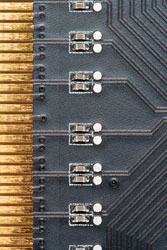Advanced mass biomechanical sensing
With the aid of emerging nanotechnology processes and techniques, the NANOMASS II project exploited Complementary Metal-Oxide-Semiconductor (CMOS) circuitry technology for the generation of mechanical mass sensors. The novel sensors are based on an array of nanometre scale silicon cantilevers and can be used in environmental or biochemical applications. Innovative nanolithography techniques and novel silicon-on-insulator (SOI) substrates were employed for the nanocantilever fabrication. Laser or atomic force microscopy (AFM) nanolithography were exploited for optimisation purposes. On the other hand, electron beam lithography and nano-imprint lithography were adopted for assessing reduction in dimensions and increase in throughput. The introduction of the SOI substrates in the semiconductor fabrication by replacing bare silicon substrates was to improve the performance and shrink the geometry of the cantilever. Demonstrators of ultra thin Al (aluminium) nanocantilevers were realised and characterised for mass sensing applications. The fabrication involved a negative ultra violet lithography step and characterisation was completed with the aid of a scanning electron microscope. The fabrication process is CMOS compatible and inexpensive allowing full control of the cantilever's thickness at the nanometre scale. In comparison to single crystal silicon cantilevers, the Al nanocantilevers feature high mass sensitivity and may have useful applications in the field of mass sensing. For further information on the project, click at: http://einstein.uab.es/_c_nanomass/







